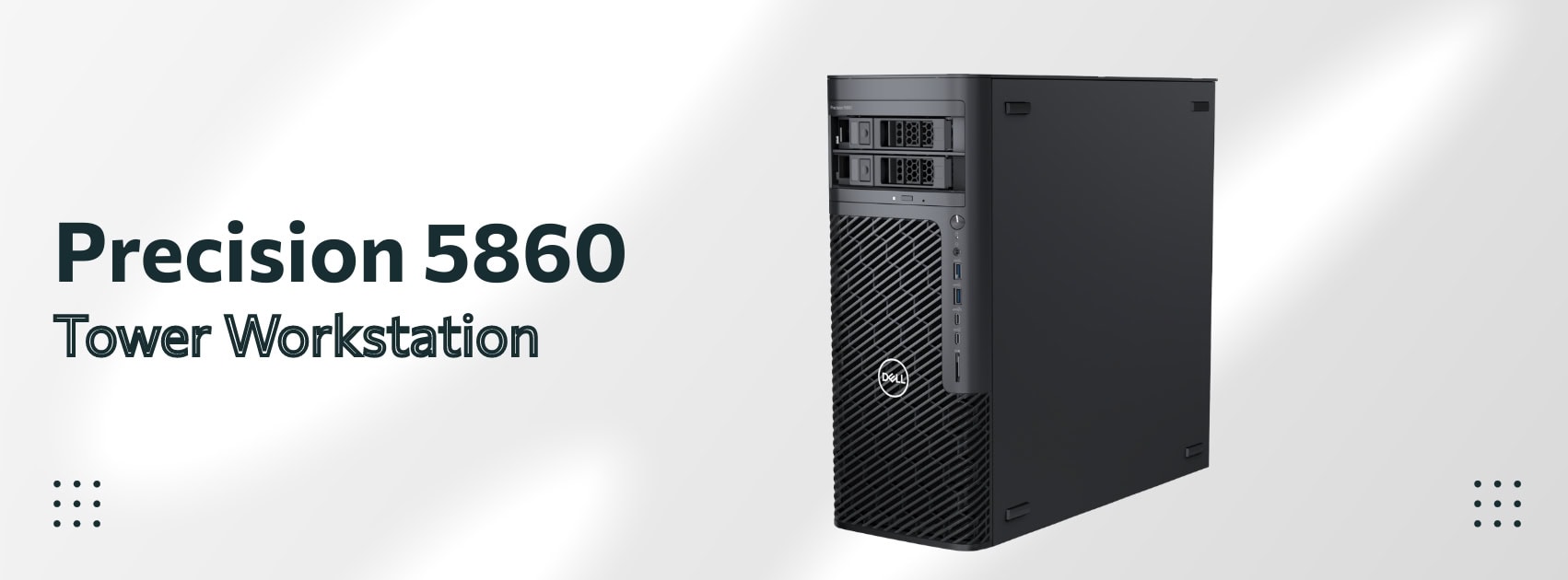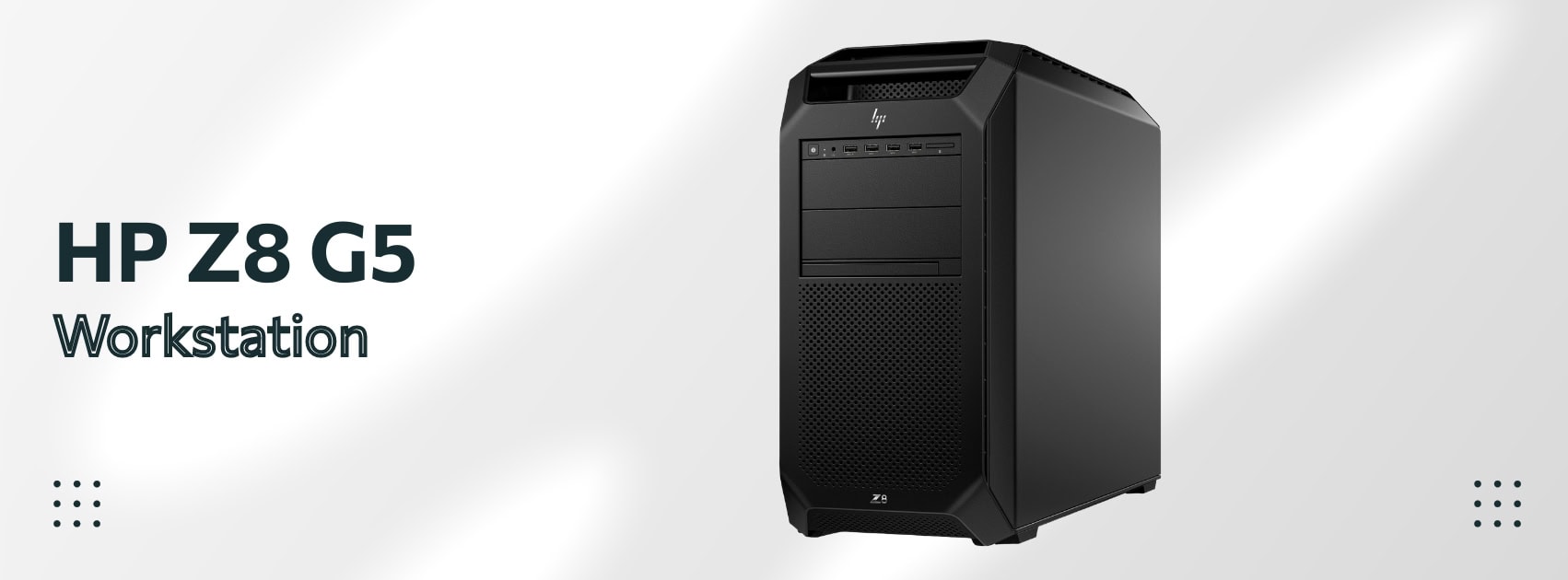CAD Workstation Buying Guide for Architecture Firms: High-End Business Workstations ($2,000-$8,000)
The foundation of every successful architecture firm lies in having the right technology to bring creative visions to life. When working with complex building information modeling (BIM) software like Autodesk Revit, AutoCAD, or advanced 3D visualization tools, your workstation becomes a critical tool that directly influences productivity, design capability, and project delivery efficiency.
After working with architecture firms across various markets, we've observed how appropriate workstation investments can improve a practice's capabilities and competitive position. Whether you're a growing firm handling residential projects or an established practice tackling large commercial developments, choosing between Dell's Precision workstations and HP's Z Series requires understanding your specific workflow demands and long-term growth plans.
Quick Reference: Workstation Categories by Firm Size
| Workstation Class | Price Range | Best For | Key Benefits |
|---|---|---|---|
| Entry Professional | $2,000-$4,000 | Small firms, 2D-focused work | Cost-effective, expandable |
| Mid-Range Professional | $4,000-$6,000 | Medium firms, mixed 2D/3D | Balanced performance, proven value |
| High-End Professional | $6,000-$8,000+ | Large firms, complex BIM work | Maximum performance, future-proof |
Table of Contents
- 1 Understanding Architecture Workflow Requirements
- 2 Dell Precision 5860: Complete Analysis
- 3 HP Z Series Workstations: The Established Choice
- 4 Memory and Storage Strategy for Architecture Firms
- 5 Software Optimization in Practice
- 6 Budget Planning and Return on Investment
- 7 Implementation Strategy for Professional Success
- 8 Vendor Selection: Dell vs HP Considerations
- 9 Making the Final Decision
Understanding Architecture Workflow Requirements
Architecture firms face unique computational challenges that differ significantly from general business computing. Modern architectural software demands a careful balance of processing power, memory capacity, and graphics performance that most IT professionals don't fully understand.
The Reality of CAD Performance
Unlike gaming or general productivity software, architectural applications like AutoCAD and Revit are predominantly single-threaded applications. This means having 32 cores doesn't necessarily make your software run faster than having eight cores with higher clock speeds. For AutoCAD and Revit workflows, CPU clock speed matters more than core count—a fundamental misunderstanding that leads many firms to waste money on unnecessary processing power.
Official Software Requirements (Verified from Autodesk):
AutoCAD 2025:
- Minimum Processor: 2.5-2.9 GHz minimum with 8 logical cores
- Recommended Processor: 3+ GHz base frequency, 4+ GHz turbo
- Memory: 8GB minimum, 16GB recommended
- Graphics: DirectX 11 capable graphics card
Revit 2025:
- Processor: Intel i-Series, Xeon, AMD Ryzen 2.5 GHz or higher
- Memory: 16GB minimum, 32GB recommended for complex models
- Graphics: DirectX 11 capable graphics card
- Storage: Fast SSD strongly recommended for model files
Memory Requirements by Project Complexity
Understanding memory needs requires looking at actual project sizes rather than theoretical maximums:
- Small Projects (under 300MB): 16GB handles daily work comfortably
- Medium Projects (300-600MB): 32GB provides smooth performance with multitasking
- Large Projects (600MB-1GB): 64GB optimal for complex models and rendering
- Complex Projects (over 1GB): 128GB+ for city-scale and infrastructure work
Professional vs Consumer Graphics: The Real Difference
One critical decision for architecture firms involves choosing between professional and consumer graphics cards. The differences extend far beyond raw performance specifications:
Professional Graphics Advantages:
- Certified drivers optimized specifically for CAD software
- ECC graphics memory that corrects errors during long work sessions
- Enhanced precision for CAD wireframe and technical drawing modes
- Professional application support and troubleshooting
- Multi-monitor support optimized for design workflows
Professional graphics cards undergo extensive testing and certification for CAD applications. NVIDIA's professional certification program ensures compatibility and optimal performance with leading architecture software, providing the reliability that professional practices require.
Consumer Graphics Considerations:
- Significantly lower cost for comparable raw performance
- Excellent for firms primarily focused on 2D drafting
- May lack driver optimizations for professional software
- Suitable for budget-conscious practices with basic 3D needs

Dell Precision 5860: Complete Analysis
Dell's Precision 5860 Tower represents a thoughtfully designed approach to professional workstations, with verified configurations that provide clear upgrade paths as firm needs evolve. For firms looking to balance performance with value, this system offers an excellent foundation that can grow with your practice.
Pricing and Configurations
Entry Configuration – $2,619
- Intel Xeon W3-2423 (6-core, up to 4.2 GHz boost)
- 16GB DDR5 ECC memory
- AMD Radeon Pro W6400 (4GB GDDR6)
- Windows 11 Pro for Workstations
- No storage included (allows custom configuration)
Mid-Range Configuration – $3,539
- Intel Xeon W3-2435 processor
- 32GB DDR5 ECC memory
- NVIDIA RTX A400 (4GB GDDR6)
- Windows 11 Pro for Workstations
- No storage included
High-Performance Configuration – $5,344
- Intel Xeon W5-2465X (16-core, up to 4.7 GHz boost)
- 64GB DDR5 ECC memory
- NVIDIA RTX A400 (4GB GDDR6)
- 1TB Performance SSD
- Ubuntu Linux 22.04 (Windows available)
Why the Precision 5860 Stands Out
The Precision 5860's redesigned mid-tower chassis addresses real-world architecture firm needs through thoughtful engineering choices. The system supports up to 24-core Xeon processors and can accommodate up to 2TB of DDR5 ECC memory, providing substantial headroom for future growth without requiring a complete system replacement.
Key Technical Advantages:
- Dual Graphics Support: Up to two 300W professional graphics cards
- Storage Flexibility: External access bays supporting up to 56TB total capacity
- Network Performance: Both 1GbE and 10GbE Ethernet connections
- Memory Scalability: Eight DIMM slots supporting up to 2TB DDR5 ECC
- Serviceability: Tool-less access to all major components
The inclusion of 10GbE networking deserves particular attention for architecture firms. Large Revit models, extensive CAD reference files, and high-resolution rendering assets can create significant network bottlenecks. The 10GbE connection enables true network storage performance that keeps pace with local SSD speeds. For firms considering a comprehensive network infrastructure, understanding proper network security protocols becomes essential when implementing high-speed workstation connectivity.

HP Z Series Workstations: The Established Choice
HP's Z Series has maintained its professional market position through consistent performance, reliability, and attention to the details that matter in daily use. The current generation offers three performance tiers that align well with firm requirements.
HP Z4 G5: The Balanced Performer
The HP Z4 G5 has earned recognition as HP's best-selling workstation by effectively balancing performance, expandability, and cost. Current generation systems support up to 24-core Intel Xeon W-series processors and up to 512GB of DDR5 ECC memory, providing substantial capability for most architectural workflows.
Notable Z4 G5 Features:
- Thermal Management: Smart fan control with 20+ temperature sensors
- Expandability: Tool-less chassis design with five PCIe slots
- Graphics Support: Dual high-end professional graphics cards
- Quiet Operation: Advanced acoustic engineering for office environments
- Front Access: Hot-swappable NVMe storage bays with external access
HP Z6 G5: Enhanced Performance
The Z6 G5 significantly enhances capability for firms handling more complex projects or requiring additional expandability. Supporting up to 36-core Intel Xeon W-3400 series processors and up to 1TB of DDR5 ECC memory, it targets practices working with large-scale projects or advanced visualization requirements.
The Z6 G5's enhanced PCIe expandability allows for up to three professional graphics cards, making it suitable for firms that need both design capability and substantial rendering power in a single system. This configuration works particularly well for practices that handle both architectural design and visualization services.
HP Z8 G5: Maximum Capability
At the top of HP's range, the Z8 G5 provides dual-socket Intel Xeon Scalable processors, up to 2TB of DDR5 ECC memory, and support for up to four professional graphics cards. This level of capability typically serves large firms working on complex infrastructure projects, practices specializing in advanced simulation and analysis, or offices providing workstation virtualization services.
Memory and Storage Strategy for Architecture Firms
Memory configuration deserves careful consideration because it directly impacts daily workflow efficiency and determines how projects scale over time. Most architecture firms find that 32GB of DDR5 ECC memory is the minimum for comfortable operation with modern software and typical project complexity.
Storage Performance and Architecture Workflows
Storage strategy requires balancing performance, capacity, and cost while considering the collaborative nature of architectural practice. Fast NVMe SSD storage for the operating system, applications, and active project files ensures responsive operation during the frequent file operations that characterize CAD and BIM work.
Recommended Storage Configuration:
- Primary Drive: 1TB NVMe SSD for OS, applications, and current projects
- Secondary Storage: 2-4TB SSD or hybrid storage for archives and assets
- Network Integration: High-speed connection to firm's central file storage
- Backup Strategy: Local backup capability for critical work-in-progress files
The choice between NVMe and SATA SSDs for secondary storage often comes down to budget considerations and access patterns. Frequently accessed asset libraries and recent project archives benefit from NVMe performance, while long-term storage and infrequently accessed files can utilize more cost-effective SATA SSDs. For firms embracing collaborative workflows, cloud computing solutions can complement local workstation storage by providing secure, accessible project sharing capabilities.
Software Optimization in Practice
AutoCAD 2025 optimization centers on processor clock speed and memory capacity, with graphics requirements varying significantly based on the complexity of 3D work within the practice. According to Autodesk's official system requirements, firms primarily working in 2D with occasional 3D modeling can utilize less expensive professional graphics cards, while practices doing extensive 3D visualization benefit from higher-end options with substantial graphics memory.
Revit 2025 presents more complex optimization challenges due to its database-driven architecture and real-time 3D environment. The software benefits from both high single-core performance for interactive operations and adequate memory for handling large, complex models without performance degradation. For firms managing multiple software licenses and collaborative workflows, understanding the benefits of cloud-based software management can streamline both CAD software deployment and project collaboration.
Performance Scaling by Project Type
Different architectural project types place varying demands on workstation resources:
Residential Projects typically require moderate system resources, with an emphasis on 2D drafting capability and basic 3D visualization. Entry-level professional workstations effectively handle these workflows.
Commercial Projects: Commercial projects demand balanced performance across 2D documentation, 3D modeling, and coordination with consultants. Mid-range workstations provide the optimal price-performance ratio for most commercial work.
Infrastructure Projects: Require maximum system capability for handling large-scale models, point cloud integration, and complex simulation. High-end workstations become necessary for efficient project delivery.
Budget Planning and Return on Investment
The investment in professional workstations extends far beyond immediate technical capabilities. For architecture firms, workstation performance directly impacts project delivery schedules, client presentation quality, and the ability to take on increasingly complex and profitable projects.
Three-Year Cost Analysis
Entry-Level Investment ($2,000-$4,000)
- Suitable for small firms or those primarily doing 2D work
- Handles basic 3D modeling and standard visualization
- May require component upgrades within 2-3 years for growing practices
- Provides a solid foundation for establishing digital workflows
Mid-Range Investment ($4,000-$6,000)
- Handles most architectural workflows effectively with room for growth
- Excellent performance for both 2D documentation and 3D design
- Typically provides 3-4 years of optimal performance
- Best value proposition for the most growing firms
High-End Investment ($6,000-$8,000+)
- Maximum performance for demanding workflows and complex projects
- Future-proof against software updates and increasing project complexity
- Provides 4-5 years of top-tier performance
- Enables competitive advantage in complex project pursuits
Productivity Impact and ROI Calculation
Productivity improvements from appropriate workstation specifications compound over time in ways that directly impact profitability. Faster file operations, responsive model navigation, and reduced waiting time for view generation and plotting can reduce overall project delivery time by 10% to 20%.
For a typical architecture firm billing $150 per hour for design services, a workstation that saves two hours per week per user generates $15,600 in additional billable capacity annually. This calculation doesn't include the less tangible but equally important benefits of improved staff satisfaction, enhanced client presentations, and the ability to pursue more complex and profitable projects.
Implementation Strategy for Professional Success
Successful workstation implementation requires careful planning and phased execution that considers both technical requirements and business operations. Most firms benefit from starting with a thorough assessment of current performance bottlenecks, user requirements, and workflow inefficiencies that technology improvements can address.
Phased Implementation Approach
Phase 1: Assessment and Planning (Week 1)
- Evaluate current workstation performance and identify bottlenecks
- Survey staff about workflow challenges and technology frustrations
- Assess network infrastructure and storage requirements
- Determine budget constraints and explore financing options
Phase 2: Pilot Deployment (Weeks 2-4)
- Deploy one or two new workstations to key users or bottleneck positions
- Monitor performance improvements and gather user feedback
- Test integration with the existing network infrastructure and software
- Document configuration settings and establish support procedures
Phase 3: Full Implementation (Months 2-3)
- Roll out additional workstations based on priority and budget
- Provide training on new capabilities and workflow optimizations
- Establish maintenance schedules and upgrade planning
- Measure productivity improvements and ROI realization
Vendor Selection: Dell vs HP Considerations
Both Dell and HP bring significant strengths to the professional workstation market, with the choice often depending on specific firm requirements and preferences rather than clear technical superiority.
Dell Precision Advantages:
- Transparent, verified pricing with clear configuration options
- Extensive customization capabilities for specific workflow requirements
- Strong business support programs and comprehensive warranty options
- Excellent expandability and serviceability for growing firms
HP Z Series Advantages:
- Long-established reputation and proven reliability in professional environments
- Superior thermal management and acoustic engineering
- Comprehensive ISV certification program across professional applications
- Wide range of models addressing different performance requirements
Making the Final Decision
The choice between specific workstation models ultimately depends on the intersection of current needs, growth trajectory, and budget constraints. Firms should resist both the temptation to over-specify systems beyond their realistic requirements and the false economy of under-specifying systems that will quickly become performance bottlenecks.
Dell's Precision 5860 offers transparent pricing starting at $2,619 and proven expandability, making it particularly suitable for firms that prefer to start with solid specifications and upgrade components as needs evolve. The verified configurations provide a clear foundation for budget planning and direct price comparison.
HP's Z Series workstations combine extensive industry experience with engineering refinement. They appeal to firms that prioritize proven reliability, quiet operation, and comprehensive software certification. The range of models from Z4 through Z8 allows firms to match their investment closely to their performance requirements.
Professional success in architecture increasingly depends on the effective integration of design creativity and technical capability. The workstation serves as a foundation of this integration, enabling architects to focus on design excellence while providing the computational power necessary for complex projects.
Appropriate workstation selection enhances design capability, improves project delivery efficiency, and supports competitive positioning in a demanding marketplace. Whether designing residential projects or commercial developments, having reliable, responsive technology enables firms to focus on design excellence without technical limitations constraining their work.
This guide reflects verified manufacturer specifications and official software requirements as of July 2025. Configurations and pricing may vary by region and change over time. Always confirm current specifications and pricing directly with manufacturers or authorized resellers before making purchase decisions.



Leave a Reply
Want to join the discussion?Feel free to contribute!